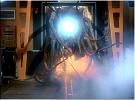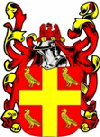mlees
Posts: 2263
Joined: 9/20/2003
From: San Diego
Status: offline

|
quote:
Some of you are answering the question like there are no other variables besides two tanks, one at each end of a football field and deciding which one will destroy the other.
You quoted me directly, and I can only assume that your statement of "considering no other variables" was directed at me. But my statement alludes to the fact that there are variables other than blueprint qualities to be considered. Please don't confuse me so early in the AM...
quote:
Don't forget to take into account things like: how many can you produce with the same materials and manpower. How many can you get to the field with the same transport. can you field repair them when they get damaged.
Those questions, it seems to me, are not "design" specifications, but strategic considerations that ought to be figured into planning war production and logistic support. Therefore, any shortcomings here are "planning" errors, not a failure of the tank design itself.
quote:
Will they break down easily. That definately is a design issue.
quote:
Sure, if you're the guy in the turret, you want a tiger. If you're the supreme commander, you want the 10 shermans that can be fielded with the same effort that you can field 1 tiger.
But if you have a manning problem, finding the crews for a single Tiger may be easier than 10 Shermans. Depends on circumstances, really. I agree that the tank crews themselves will want as much protection, firepower, and reliability as can be fielded.
The apples to oranges, for me, is that in acuality, the two vehicles had different design philosophies. The Sherman was primarilly intended for an infantry support role, ease of mass production, field reliability. It filled these roles well. It was only when it had to face an armored vehicle like the Tiger and Panther that it was found laking. (But again, it was not designed with those opponents in mind.)
The anit-tank vehicle, as initially developed, was the (M10?) Wolverine. This vehicle, where the design stage was in the thirties, was provided with a higher velocity 76mm gun (as opposed to the lower velocity 75mm on the Sherman). Combat experience versus the Tiger and Panthers showed that this vehicle was not quite up to the task, and so the Shermans had to be modified with longer barreled weapons. The adaptablilty of the Sherman proved to be sufficient for the demands placed on a tank to do a task that it was not be designed for.
The Tiger and Panther were designed from the get-go to be superior in firepower and protection to any (known) enemy tank design. As designed, these tanks were that. The low reliability of the engine was a design bug, but one that was eventually worked out too late to make any difference.
The fact that these designs put an enormous strain on production and supply systems is not a design failure, but a philosophy failure. This might be seen as splitting hairs, but if the strategic planning leadership overestimated their ability to keep these machines running (or failed to take into account the fuel need, transport needs, repair needs), it is not the machines fault...
quote:
Ask yourself this question: Would you rather have one Yamato or two Iowas? It's the same question about whether you want a Tiger or a sherman. You just have to take into account how many shermans you get for the price of a tiger.
The problem, again, not a fault of the ship design itself. Both (Yamato and Iowa) were excellent designs. But Japan could not, in the long run, afford the demands on scarce shipbuilding and fuel rescources like the Allies could. The Japanese war planners should have had "clearer vision" on what to spend their limited rescources on. That is not the Yamato's fault.
|
 Printable Version
Printable Version













 New Messages
New Messages No New Messages
No New Messages Hot Topic w/ New Messages
Hot Topic w/ New Messages Hot Topic w/o New Messages
Hot Topic w/o New Messages Locked w/ New Messages
Locked w/ New Messages Locked w/o New Messages
Locked w/o New Messages Post New Thread
Post New Thread